Highest Rank in Uttar Pradesh Police: All You Need to Know
Police Promotion Timeline Calculator
Estimated Promotion Timeline
Uttar Pradesh Police is a state law‑enforcement agency operating under the Ministry of Home Affairs, Government of India. It is one of the largest police forces in the country, with over 200,000 personnel spread across 75 districts. If you’ve ever wondered what the top rung looks like, you’re in the right place - this guide breaks down the entire rank ladder and zeroes in on the highest rank, the Director General of Police (DGP).
Why the rank structure matters
Understanding the hierarchy helps citizens know who to approach for specific issues, gives aspiring officers a roadmap, and lets you appreciate the chain of command that keeps law and order running in a state as big as Uttar Pradesh. The UP police rank system mirrors the national IPS framework but adds a few state‑specific titles.
Overview of the Uttar Pradesh Police hierarchy
The rank chart can be split into three broad zones: Junior Officers, Senior Officers, and the Apex Leadership. Below is a quick snapshot before we dive deeper.
| Rank | Insignia | Typical Posting |
|---|---|---|
| Constable | Three chevrons | Police station duty |
| Head Constable | d>Senior station duties | |
| Assistant Sub‑Inspector (ASI) | Two stars | Sub‑station supervisor |
| Sub‑Inspector (SI) | One star | Station head (in smaller stations) |
| Inspector | Three stars | Head of a police circle |
| Deputy Superintendent of Police (DSP) / Assistant Commissioner of Police (ACP) | One star + national emblem | Sub‑division commander |
| Superintendent of Police (SP) | One oak leaf | District police chief |
| Senior Superintendent of Police (SSP) | Two oak leaves | Large district or zone |
| Deputy Inspector General (DIG) | Two stars + national emblem | Range or specialised branch |
| Inspector General (IG) | Three stars + national emblem | Zone commander |
| Additional Director General of Police (ADGP) | Crossed baton & sword | State‑wide departments (e.g., Crime, Training) |
| Director General of Police (DGP) | National emblem over crossed sword & baton | Head of Uttar Pradesh Police |
Climbing the ladder: Key milestones
Most officers start their career by clearing the UPSC Civil Services Examination and joining the Indian Police Service (IPS) cadre. After a rigorous training stint at the National Police Academy, they are allotted to a state - many choose the Uttar Pradesh cadre because of its size and diversity.
- Probationary phase (DSP/ACP): Fresh IPS officers spend 2‑3 years learning the ropes under senior mentors.
- First command (SP/SSP): Managing a district police force gives exposure to law‑and‑order challenges, from traffic control to crime investigation.
- Mid‑career (DIG/IG): Officers start handling larger zones or specialised units such as the Crime Branch, Intelligence, or Training.
- Senior leadership (ADGP): This role often involves policy formulation, liaison with the state government, and overseeing multiple zones.
- Peak appointment (DGP): The final step where an officer becomes the chief executive of the entire state force.
Spotlight on the top rank: Director General of Police (DGP)
The DGP is the constitutional head of the Uttar Pradesh Police. The appointment is made by the State Government in consultation with the Union Ministry of Home Affairs. Typically, the officer holds the rank of an IPS veteran with 30+ years of service.
Key responsibilities include:
- Strategic planning for crime prevention across 75 districts.
- Coordinating with central agencies like the Central Bureau of Investigation (CBI) and National Investigation Agency (NIA).
- Managing the state’s budget, procurement, and modernisation programmes (e‑surveillance, drones, etc.).
- Representing the police at state cabinet meetings and handling public‑relations crises.
The DGP’s insignia features the national emblem perched over a crossed sword and baton, a visual cue that signals authority both within the force and to the public.
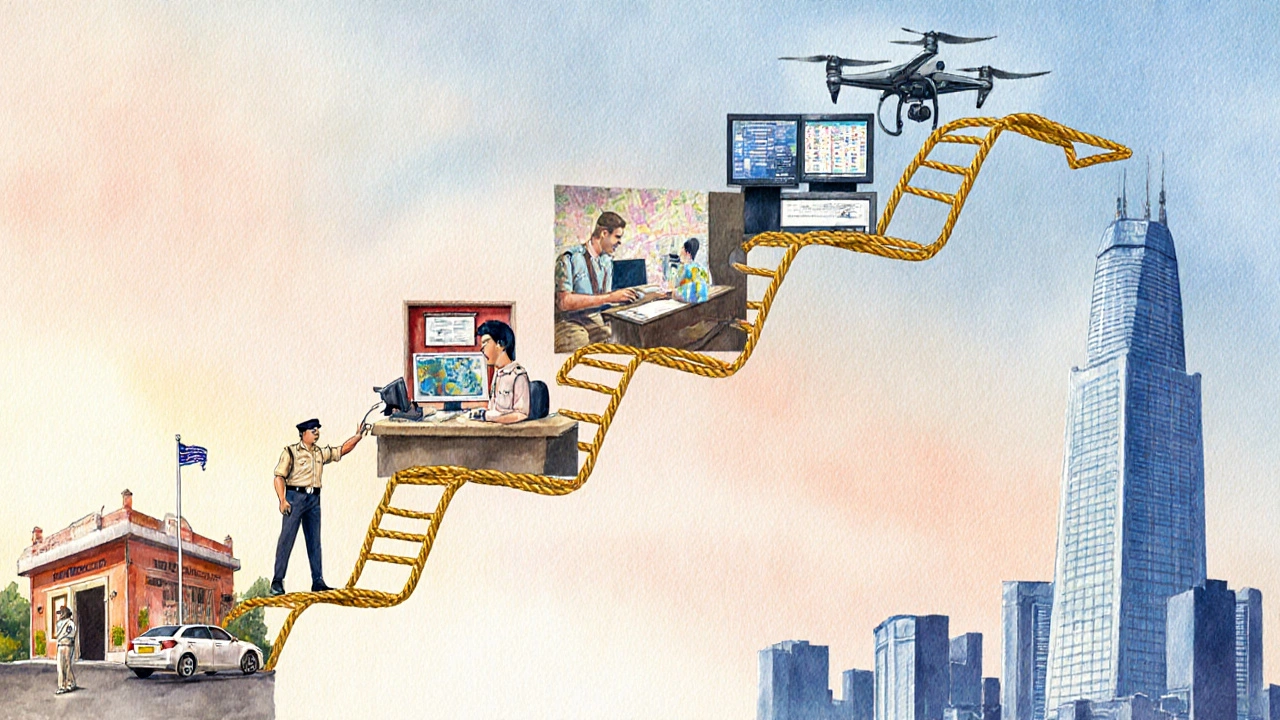
Who has held the DGP post in Uttar Pradesh?
Over the past decade, several notable officers have steered the force:
- Sanjay Kumar Singh (2018‑2020): Known for launching the “Smart Policing” initiative that integrated AI‑based crime hotspots mapping.
- K. R. Ramesh (2020‑2023): Prioritised community policing; his ‘Jan Seva’ program reduced street‑level crime by 12% in Lucknow.
- Lokesh Kumar (2023‑present): Focuses on cyber‑crime units and has set up a state‑wide cyber‑forensic lab.
These leaders illustrate how the top rank can shape policy, technology adoption, and public trust.
Career roadmap: From aspirant to DGP
If you’re eyeing the highest badge, follow this checklist:
- Clear the UPSC Civil Services Exam with a strong IPS rank.
- Complete 18‑month training at the National Police Academy (NPA) and the Police Staff College.
- Serve at least 5 years in field postings (SP/SSP) to gain grassroots experience.
- Undertake specialised courses - counter‑terrorism, cyber‑security, public administration.
- Consistently receive performance awards (e.g., President’s Police Medal) to stand out for senior promotions.
Remember, promotions to DIG, IG, ADGP, and finally DGP are not just about seniority; they require a blend of operational success, strategic vision, and political acumen.
Perks, salary and other benefits at the top
The DGP enjoys the highest pay scale in the state police - currently the Level 17 Pay Band with a basic salary around INR 225,000 per month (as per the 7th Central Pay Commission). On top of that:
- Official residence in Lucknow (the capital).
- Government‑provided security detail and chauffeured vehicles.
- Access to exclusive clubs and diplomatic privileges.
- Retirement benefits include a hefty pension based on the last drawn salary.
These perks underscore the responsibility that comes with the role - the DGP is not just a police chief, but a key player in state governance.
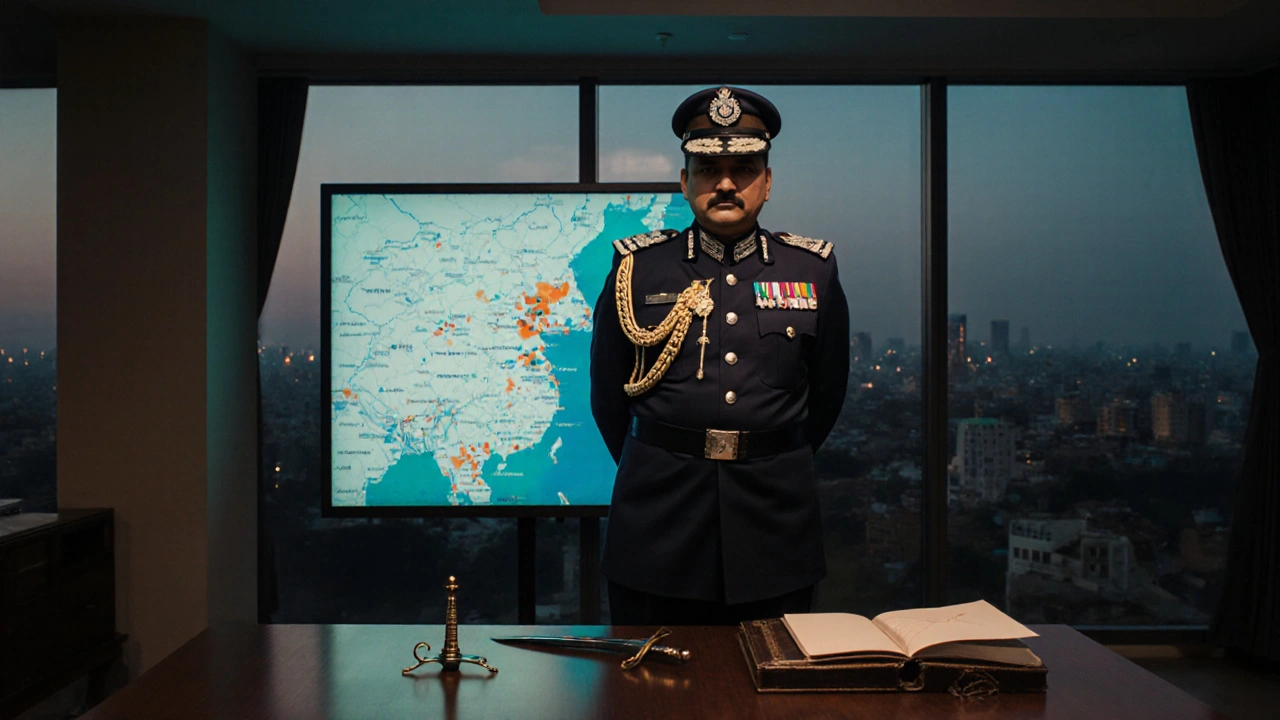
Common questions about the highest rank
Below are quick answers to the queries most people type into search engines.
| Question | Answer |
|---|---|
| Is the DGP the same as the state’s Commissioner of Police? | No. The Commissioner of Police heads a major city (e.g., Lucknow) and reports to the DGP. |
| Can a non‑IPS officer become DGP? | Rarely. The rank is traditionally reserved for senior IPS officers, though exceptional state‑service officers may be appointed in extraordinary cases. |
| How long does a DGP serve? | Typically 2‑3 years, but it depends on retirement age (60) and political considerations. |
Mini‑FAQ
What is the highest rank in the Uttar Pradesh Police?
The top rank is the Director General of Police (DGP), who heads the entire state force.
How is the DGP appointed?
The state government selects the DGP after consulting the Union Ministry of Home Affairs, usually from among senior IPS officers with 30+ years of service.
What are the insignia of a DGP?
A national emblem placed over a crossed sword and baton, signifying the highest authority in the state police.
Can a woman become DGP of Uttar Pradesh?
Yes. The IPS cadre is gender‑neutral, and several women have reached senior ranks like ADGP; the DGP post is open to any qualified officer.
What is the salary of a DGP in Uttar Pradesh?
Under the 7th Pay Commission, a DGP earns a basic salary of about INR 225,000 per month, plus allowances, housing, and pension benefits.
Next steps for readers
- If you’re a citizen needing to lodge a complaint, start at your local police station or use the UP Police’s online portal (UPPolice.gov.in).
- If you’re an aspirant, download the latest UPSC notification, start a disciplined study schedule, and consider enrolling in a reputable coaching centre.
- If you’re a policy‑maker, review the DGP’s annual performance report to spot gaps in crime‑prevention strategies.
Understanding the hierarchy demystifies who holds power, how decisions are made, and where you can engage with the system. Whether you’re asking out of curiosity or planning a career, knowing that the Director General of Police sits at the very top of the Uttar Pradesh Police gives you a clear reference point for the state’s law‑enforcement architecture.

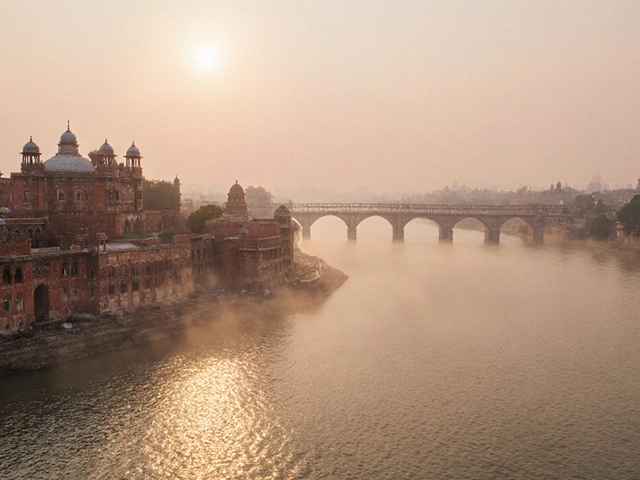
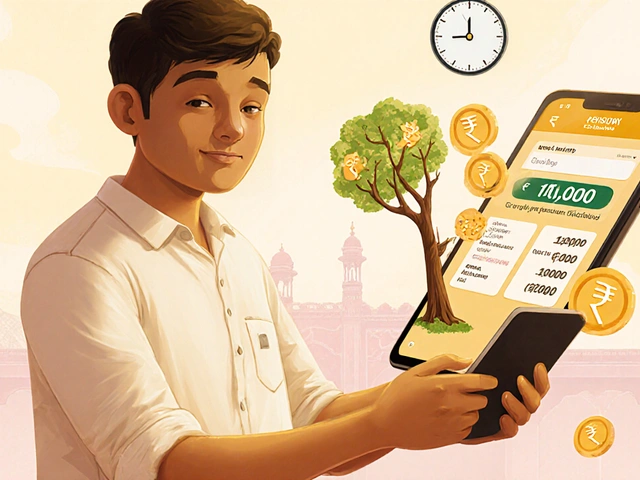

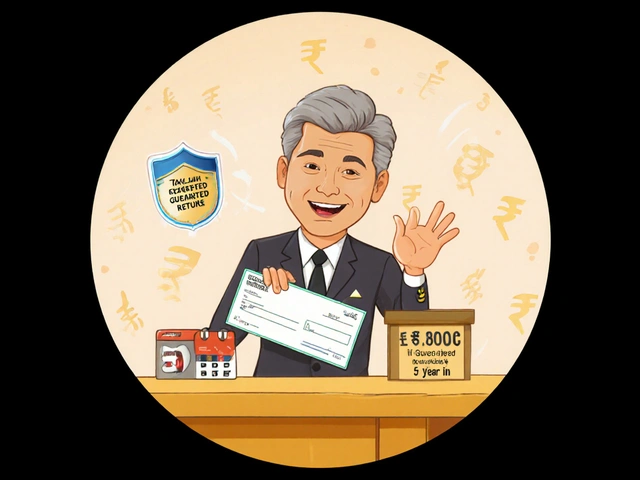
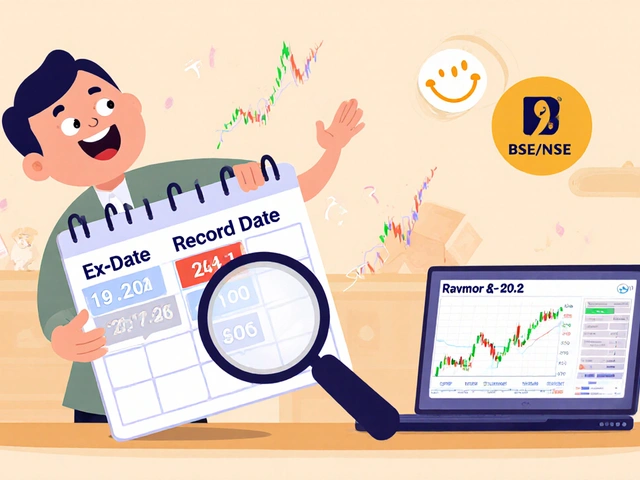
9 Comments
Wilda Mcgee
October 23 2025The UPS police hierarchy can feel like a massive maze, but breaking it down step by step reveals a clear path to the top.
The starting point is a constable, and each promotion is not just a new badge but a fresh set of responsibilities that shape the officer’s outlook.
The real turning point usually arrives when an officer dons the DSP or ACP mantle, because that is where field leadership meets strategic thinking.
After mastering district command as a Superintendent, the jump to DIG or IG opens doors to statewide coordination and specialized units.
It’s at the ADGP level that officers start crafting policies that ripple through every precinct, from cyber‑crime labs to community policing initiatives.
When the state government finally selects a seasoned IPS veteran as DGP, that person becomes the chief architect of law‑and‑order across 75 districts.
The DGP’s insignia – the national emblem over a crossed sword and baton – isn’t just decorative; it signals authority to both the force and the public.
Managing a budget that runs into billions of rupees, the DGP must balance modernisation projects like drone surveillance with grassroots needs.
Coordination with central agencies such as the CBI or NIA adds another layer of complexity, making diplomatic skill a must‑have.
Yet the role isn’t purely bureaucratic – the DGP often appears in media briefings, shaping public perception during crises.
For aspirants, the roadmap includes acing the UPSC exam, surviving the intense National Police Academy training, and accumulating diverse field postings.
Earning honors like the President’s Police Medal can fast‑track promotions, but political acumen often decides the final leap to DGP.
Women officers are fully eligible for the top slot, reflecting the gender‑neutral nature of the IPS cadre.
In recent years, DGPs like Lokesh Kumar have championed cyber‑forensics, showing that the job evolves with technological advances.
Understanding each rung of this ladder helps citizens know who to approach and motivates future leaders to aim for the highest badge.
Chris Atkins
October 25 2025I love how the guide lays out the whole chain in plain English.
The sections are easy to follow and the visuals help a lot.
This makes it simple for anyone curious about the rank ladder.
Jen Becker
October 27 2025Most people think the DGP is just a political appointment but the real power lies in operational control.
Without solid field experience the role would crumble.
Ryan Toporowski
October 29 2025Thanks for the deep dive 😊
This is super helpful for anyone eyeing the force 👍
Samuel Bennett
October 31 2025If you look closely the promotion patterns suggest a hidden network pulling strings behind the scenes.
It’s not just merit alone.
Rob D
November 2 2025This article showcases exactly how a strong state should run its police force – with iron will and patriotic pride, driving the nation forward.
Franklin Hooper
November 4 2025The article could benefit from tighter structuring its sections appear disjointed.
Jess Ciro
November 6 2025Everyone talks about tech upgrades but nobody mentions the silent surveillance that already watches every corner.
saravana kumar
November 8 2025While the piece is thorough it reads like a textbook and could use more real‑world anecdotes.